LEWISTON — As Lisbon Street curves to the right and enters the downtown district, the oval, black and white Quoddy sign on the 1876 Pepperell Mill building is a landmark, yet few locals know what goes on inside the two-story building. It used to house Cole Haan’s shoe operation, so there’s shoemaking history in there.
Quoddy has no brick-and-mortar stores, although people do wander into the old mill building from time to time asking to see their shoes. For the past 25 years, Quoddy has relied on its reputation for making comfortable, quality leather footwear — and now the internet — to sell tens of thousands of pairs of shoes.
The owners and founders of the business — Kevin and Kirsten Shorey, and managing partners Paul Healey and Charlie Liberge — say 2020 and 2021 were the best two years in the company’s 25-year history.
Credit the COVID-19 pandemic.
“There were more people at home, paying attention to what was on the web,” Liberge said. “A lot of people on their computers, people on their phones, they were looking to do something, and fortunately a lot of them chose to buy things. They had nothing else to do … the world had become very casual. Everybody was sitting home, wearing slippers.”
Slipper sales — for everyone who made them, including Quoddy — went through the roof.

Gerald Bechard hand sews a Quoddy boat shoe May 3 in Lewiston. Andree Kehn/Sun Journal
“We were pleasantly surprised, that our type of footwear was desirable during that time and has continued since,” Kirsten Shorey said.
And they haven’t looked back since, mounting an aggressive email campaign that hasn’t stopped.
“We had a better opportunity to communicate, Liberge said, “not only with our customers, but to try to get new customers.”
E-commerce jumped from 15% of retail sales in 2019 to 21% in 2021 and Morgan Stanley predicts it could rise further from $3.3 trillion today to $5.4 trillion in 2026. So, it appears consumer buying habits may have changed, for now.
It wasn’t just slippers that sold. Women’s shoes charted a new course.
“The women’s business was never really anything for the brand,” Liberge said, “but we started to introduce some new styles, new materials and we started to get women’s interest.”
Quoddy has maintained those new sales to women, but has yet to grow that segment of the market, something they say is in its plans for growth.
Businessinsider.com reports that Americans spent more than $104 billion on footwear in 2022 and that footwear prices increased more in 2022 than in any of the last 40 years. The chief economist at Footwear Retailers and Distributors of America is quoted in the article as saying the higher prices and sales can be traced to the pandemic.
THE QUODDY TRADITION MAKES A DIFFERENCE
The Quoddy name has always been associated with moccasins, which some people refer to as the original slip-on shoe, traditionally made from one piece of leather and designed for comfort, fit and durability.

Michael Fisher selects a die for a pair of shoes May 3 at Quoddy in Lewiston. He does all of the cutting for every shoe in the company and keeps track of which shoes need to go up a half size or down a half size. Andree Kehn/Sun Journal
“That’s what our specialty is — comfort,” Kevin Shorey said. “We have one specific area we’ll talk about — cradle comfort — that’s about our shoes, how they fit — they wrap around your foot. The moccasin construction of a shoe comes up with a cradle that holds your foot for comfort.”
Kirsten Shorey said most manufacturers stitch together smaller pieces of leather to make the upper to save on leather cost, often using cardboard as a filler under the foot bed. This is known as top-lasted construction, which means the leather is brought down over the top of the foot, then tucked and tacked underneath, so the sole can be glued on. You might not see it because a foot bed covers this.
Quoddy moccasins are made with one large piece of leather that wraps around the entire bottom of the shoe, and another piece sewn to the top, fully cradling the foot in soft leather. This way, the Shoreys said, there are fewer seams which leads to better comfort and fewer stress points. And that’s why moccasins are tacked onto the top of the last — the solid form around which a shoe is molded — then the leather is sewn together by hand.
How shoes are made has a direct effect on how long they’ll last, and there’s a younger generation of wage earners who value comfort, quality and durability. The challenge for Quoddy becomes not just retaining their traditional market, but attracting and retaining women and younger buyers as well.
Quoddy’s designs are overwhelmingly casual, in an increasingly casual work and play environment. They have a ready-made, or in-stock line, and a made-to-order line, with significant pricing differences. The price point is higher than what you’d pay for mass-produced, synthetic imports, but that price difference is fast disappearing. The average price of a pair of sneakers in 2023 is between $70 and $250, according to investopedia.com’s analysis of the economics of sneakers.

Patti Mailette, left, and Sandra Averill talk shop May 3 at Quoddy in Lewiston. The two started working in the shoe industry when it was popular in the area. Andree Kehn/Sun Journal
The analysis concludes that prices reflect an overall rise in manufacturing and marketing costs as sneaker companies compete to build and maintain brands that are desirable to their target markets. The use of celebrity endorsements and other marketing drives up the final cost of products. The cheap labor market in China is no longer as cheap and some manufacturers have moved to other parts of Asia to offset those labor costs in the short-term.
It’s not just sneakers, although it’s a market segment that consumers seem to consistently spend money on. According to the Bureau of Labor Statistics, prices for footwear are 933.18% higher in 2023 versus 1935. This means a $20 pair of shoes in 1935 would now cost $206.64.
QUODDY’S DILEMMA: ITS WORKFORCE IS AGING OUT
There are fewer and fewer footwear makers in this country making hand-sewn shoes. Around the world, they can be found in Italy, China, Portugal, Brazil, the Dominican Republic, El Salvador, Guatemala, Spain and Turkey, to name some.
The problem facing one of Maine’s remaining hand-sewn shoemakers is not its price point. It’s an aging workforce with little prospect of training a new generation of workers.
“It’s been a challenge,” managing partner Paul Healey said, “because you know we’ve got a very unique product, where it’s hand sewn and sewers are not readily available.”
It’s a trade that doesn’t appeal to younger Americans. “They’re aging out, you know our hand sewers — the average age is not in the 20s or 30s it’s the 50s,” he added. “We’ve got to figure out a way to train people or to do things a little differently going forward, because we’re going to be making shoes here for a while.”
One of the reasons the Shoreys moved their operation from near Passamaquoddy Bay to Lewiston in 2010 was to be closer to the skilled artisans in Lewiston and Auburn, the last vestiges of the shoemaking era of the 1920s into the 1950s, when up to 22% of the local workforce were employed in the many shoe factories here, according to the Maine Department of Labor.

A rack of custom shoes with instructions wait for attention May 3 at Quoddy in Lewiston. Andree Kehn/Sun Journal
The leadership at Quoddy would like to set up an apprentice program to recruit Mainers to its ranks. Attracting candidates is the first problem, Kirsten Shorey said. “The second challenge, for us, is the training of those people. This isn’t like making bread. It takes a lot to train people to do some of the specialties that we do.”
Training would also require the Shoreys to pull someone or multiple workers out of production to do the training, although both the founders know how to operate every machine on the floor.
One solution is to target new Mainers, who are anxious to assimilate, learn new skills and work in almost any field. A second would be to target shoemakers in other countries.
Over the years, Quoddy has established relationships with shoe manufacturers in other countries. “We have connections with factories around the world,” Liberge said, “and people who have been in the footwear business for a long time. And there are definitely people interested in coming to the U.S.”
They are skilled like the workers at Quoddy, Liberge said, but they’re in their 30s and not in their 50s. It’s one of the avenues Quoddy is looking into, along with looking for and recruiting retired shoemakers to help facilitate the training.
TECHNOLOGY, PARTNERSHIPS AND REPAIRS
“It’s like a 25-year-old startup,” Liberge said.
There is demand for their product, they insist, and a number of companies are asking Quoddy to make products for them, something they just don’t have the bandwidth for at present.
“So, there are really two segments of the business,” Liberge said. “There’s this made-to-order segment, and the at-once, immediate segment. Those price points are very different. One’s $300 the other one’s $199. We won’t be a $39.99 shoe ever. But we do believe there’s a larger audience for us and the only way we can effectively do that is to partner with other manufacturing facilities — outside of the U.S.”
Quoddy is putting out some 12,000 pairs a year, but wants to grow that number by 6,000 to 7,000 in the next two years.
“We have to start adding technology to our manufacturing process as well,” Liberge said. There have been some developments in recent years that can help toward that goal. “So there are cutting machines, stitching machines, gluing machines. There are robotics now that are being introduced into the footwear world.”
“We’re currently working with a company in Italy who is working with us on a sewing machine that can … turn out a partial shoe,” Kevin Shorey said. “We’d have a hand sewer finish off the top. What you would have is the ability to produce seven or eight times in an hour … what regular hand sewing can. We will always have hand-sewn, but in a different price segmentation.”
There will also always be a need for men and women with the skills to hand sew the finishes and fabricate the made-to-order custom shoes.
“Manufacturing product in Maine will always be part of Quoddy’s heritage,” Liberge said, “and it will always be a part of the business. Obviously, to get to larger numbers there’s only so much we can do here.”
Technology changes in the front office are making a difference already, with orders connected to the inventory system to track what’s coming and going. It’s an area the younger generation is interested in — computer systems integration and marketing.
One of the side benefits of buying leather, hand-sewn shoes is the longevity factor. With some care, they can truly last a lifetime and most shoes can be resoled two, three or even four times. Repairing Quoddy shoes is a booming part of the business.
Customers want to extend the life of their shoes and can take advantage of the shoemaker’s resole and refurbish service that runs $139 or as little as $99 on special.

David Karkos stitches a pair of shoes May 3 at Quoddy in Lewiston. He said he has the smallest feet in the shop, so he often ends up with a new pair of shoes when the designer is creating patterns. Andree Kehn/Sun Journal
That’s where David Karkos comes into the picture. He came to Quoddy 13 years ago with no experience. “It was nothing when I started,” Karkos said. “They took in repairs and sometimes I had to fix original material — something that got messed up — and it just got bigger and bigger.”
Today, Karkos can barely keep up with all the work and leans on a co-worker to get the jobs done. He’s getting older and has some health issues.
“I told them a year ago,”Karkos said. “I told them I am going to semi-retire to 24 hours. They can’t find someone to fill this position.”
It reconfirms everything the Shoreys and their managing partners already know. Karkos has three grown kids — one working in computer technology for Sappi Paper, another works for Verizon. “They ain’t gonna make that money here,” he said.
The Quoddy leadership has its work cut out if it’s to sew new life into an age-old trade that’s ingrained in Maine history. But it seems to be more of a challenge than a problem, if you listen to Kirsten Shorey.
“We don’t feel like there’s a product that’s exactly like ours, that gives the same value and comfort, classic, traditional wear that you can wear with a pair of jeans or khakis. It’s sort of timeless,” she said.
Send questions/comments to the editors.


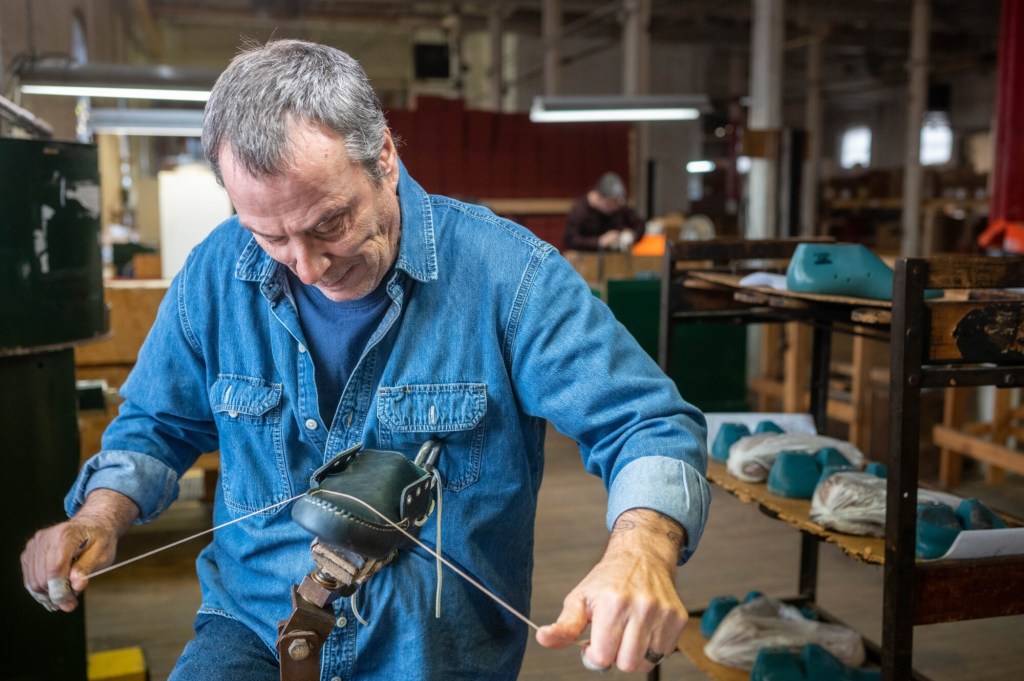
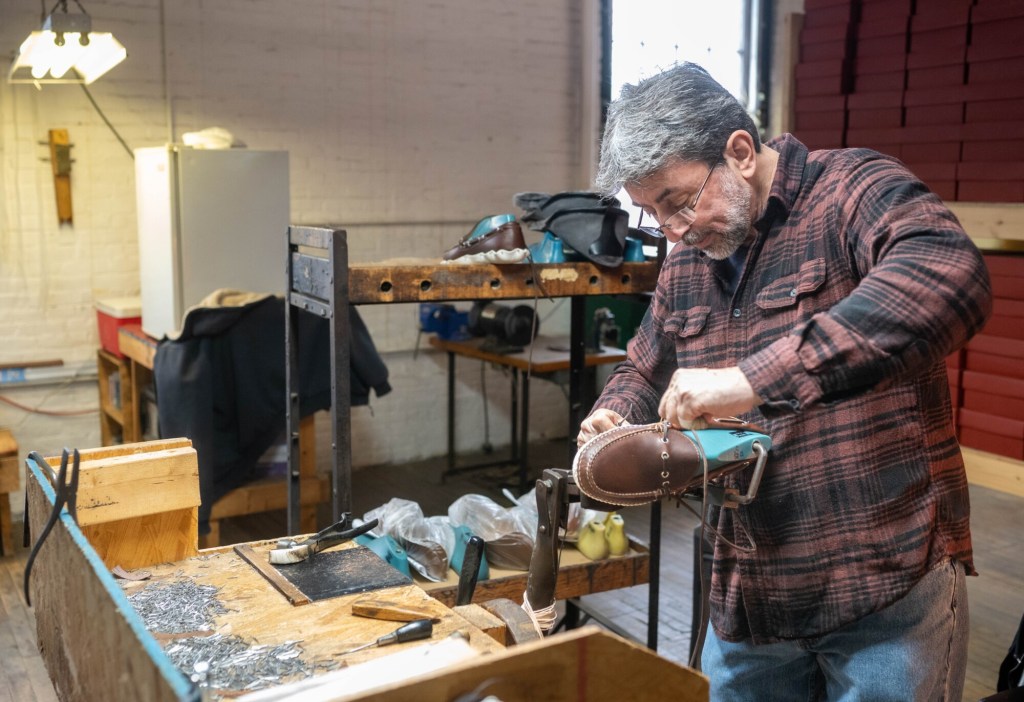
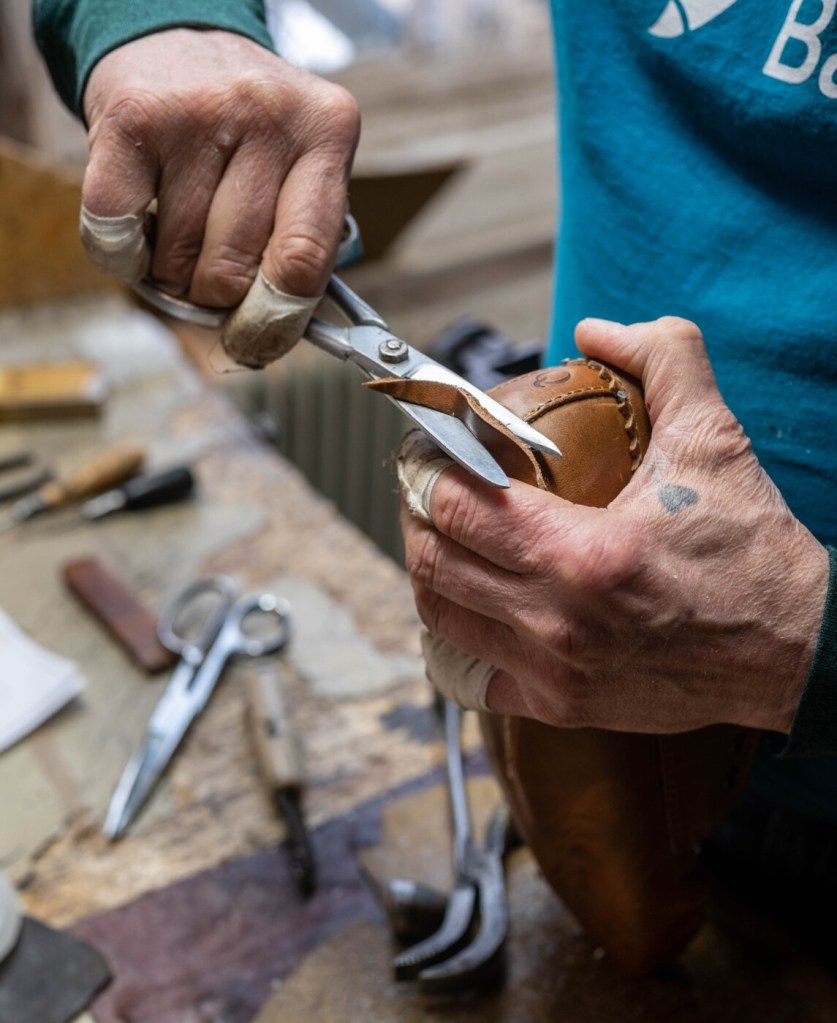
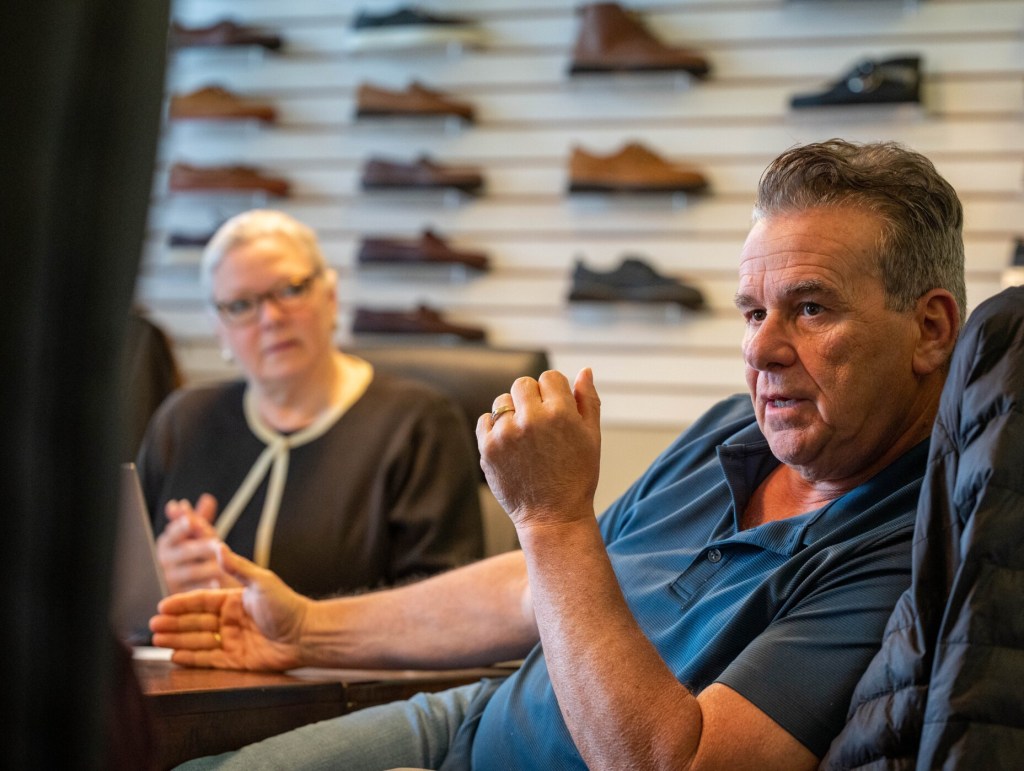
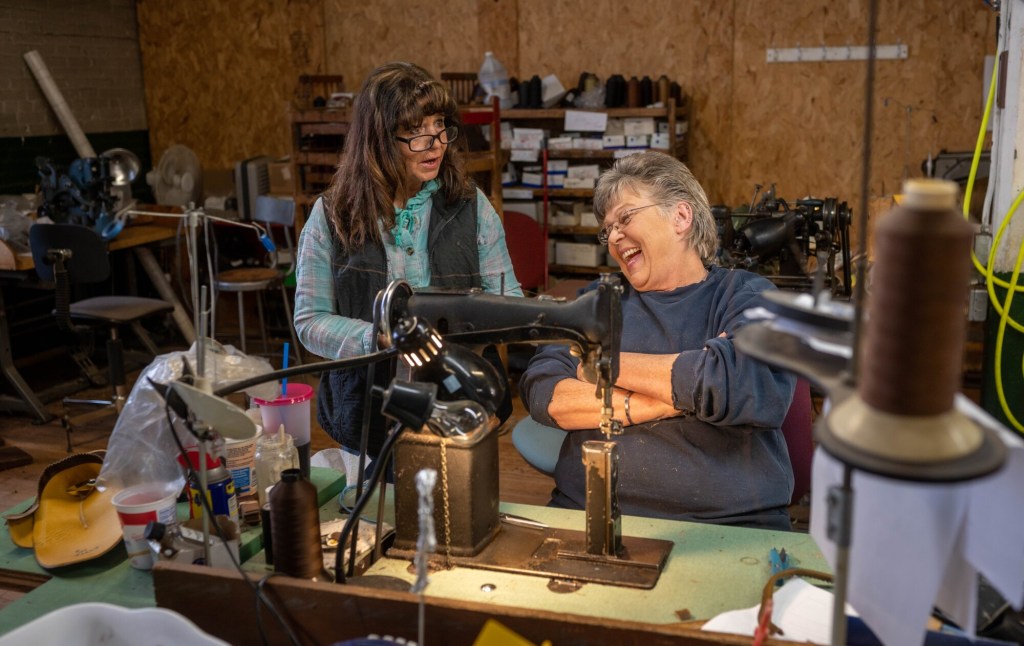
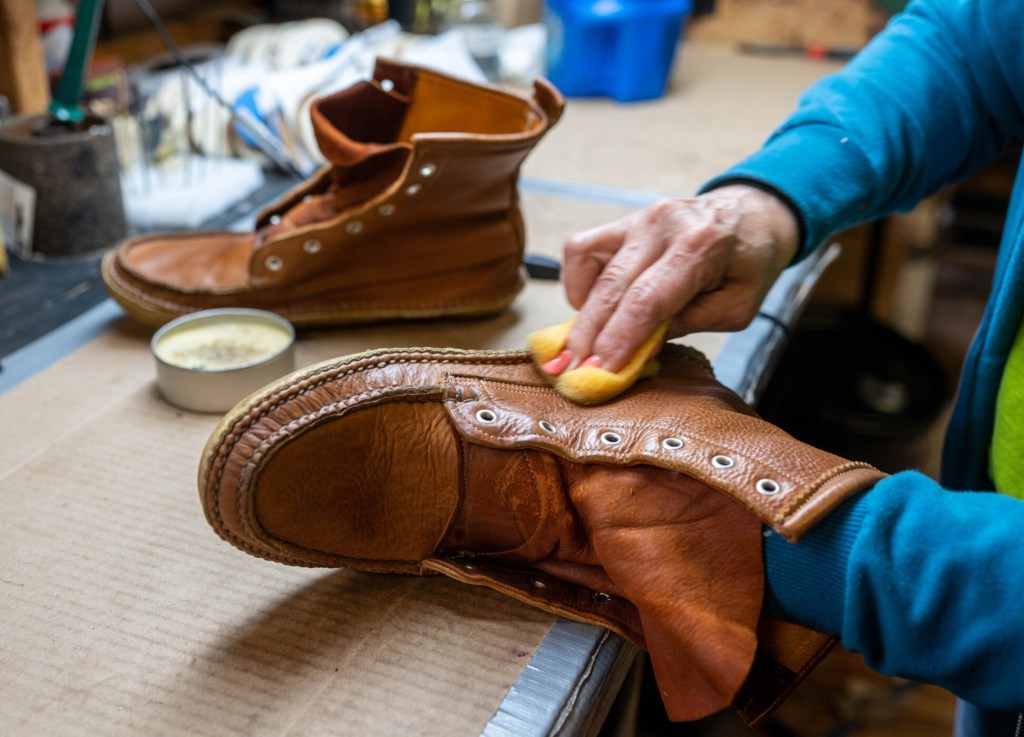
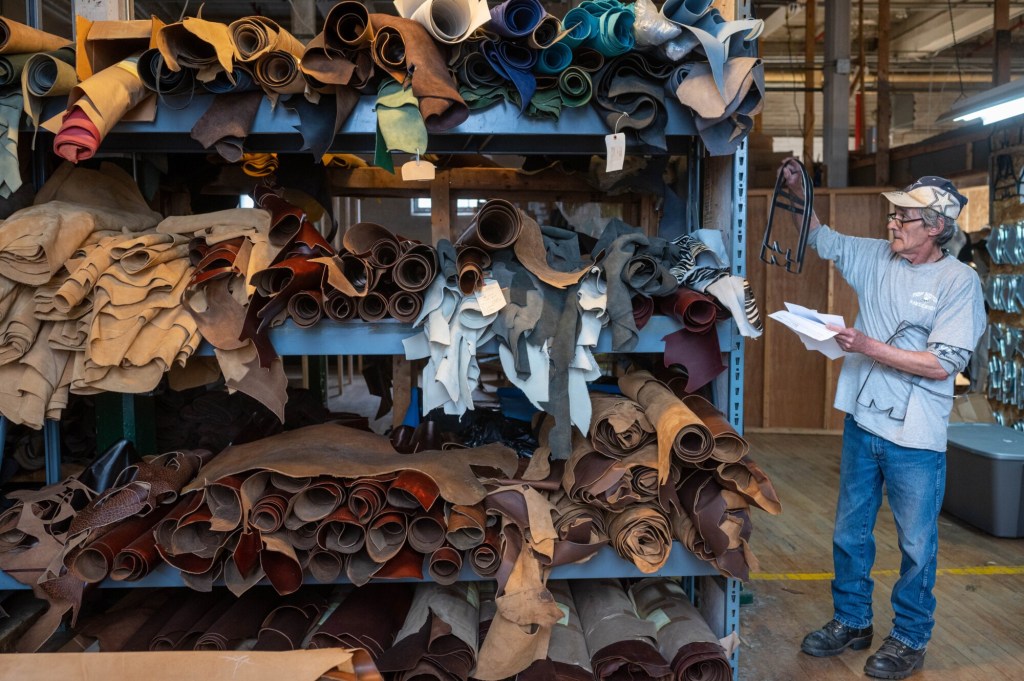
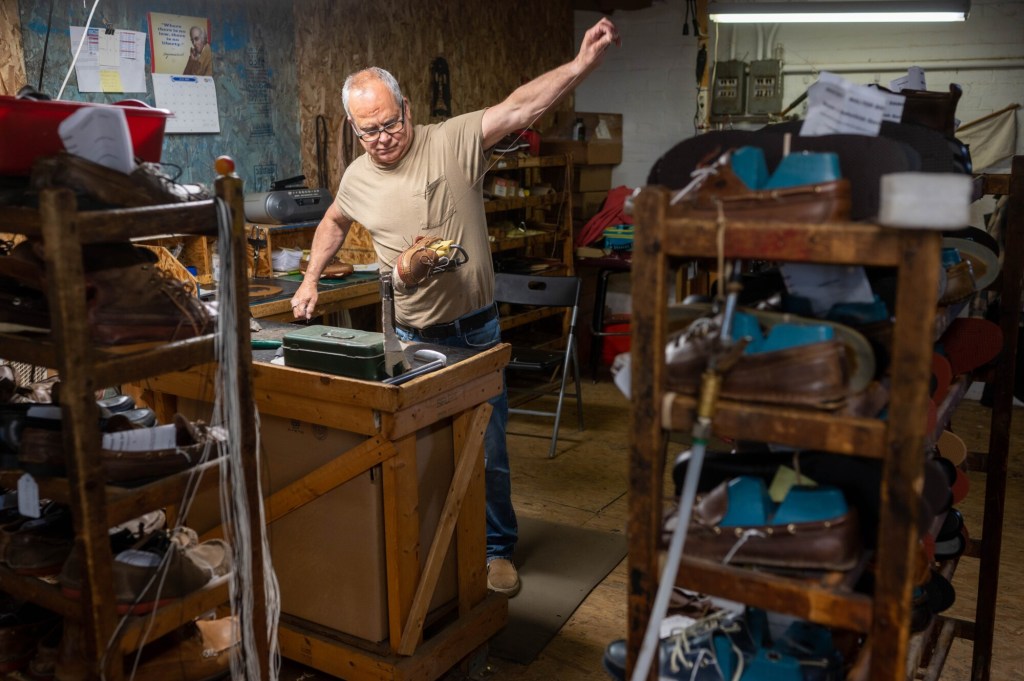
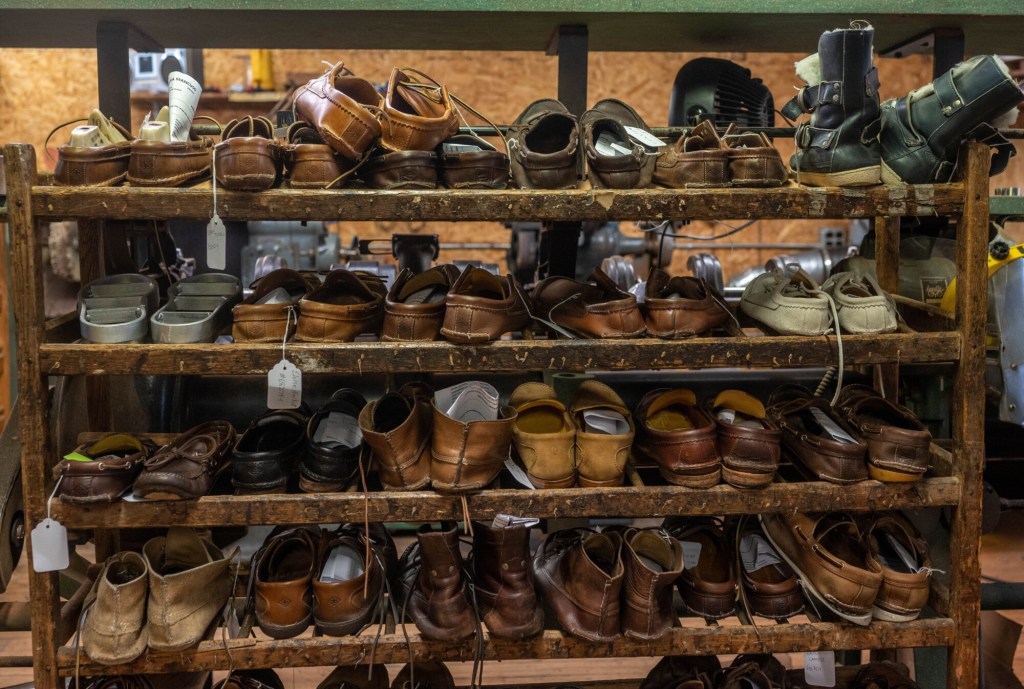
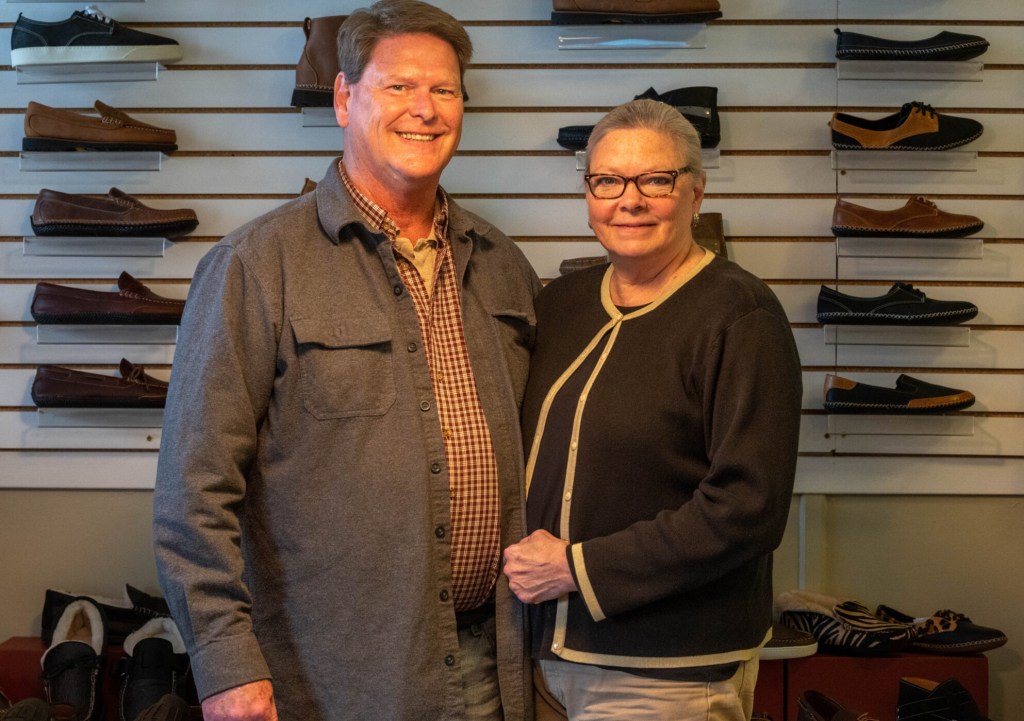
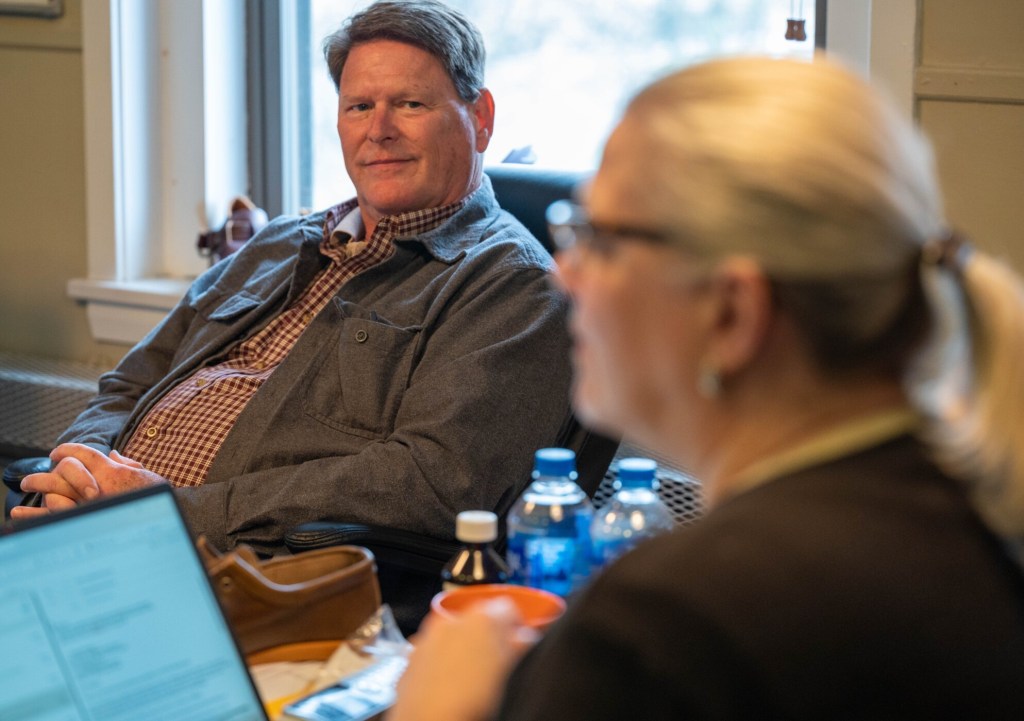

Success. Please wait for the page to reload. If the page does not reload within 5 seconds, please refresh the page.
Enter your email and password to access comments.
Hi, to comment on stories you must . This profile is in addition to your subscription and website login.
Already have a commenting profile? .
Invalid username/password.
Please check your email to confirm and complete your registration.
Only subscribers are eligible to post comments. Please subscribe or login first for digital access. Here’s why.
Use the form below to reset your password. When you've submitted your account email, we will send an email with a reset code.